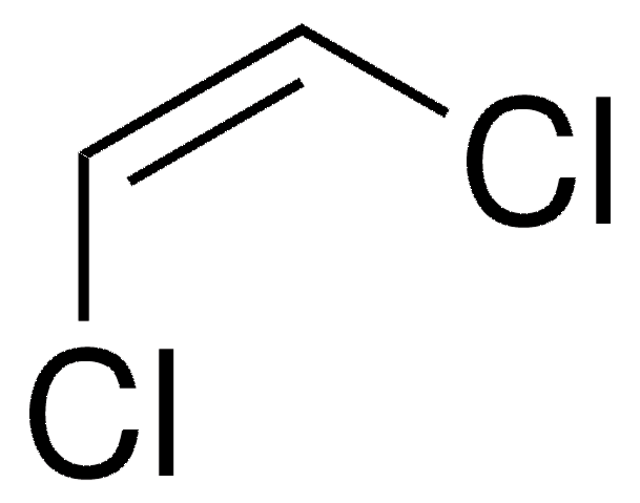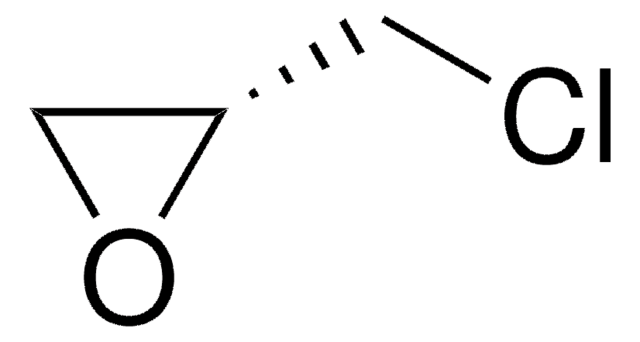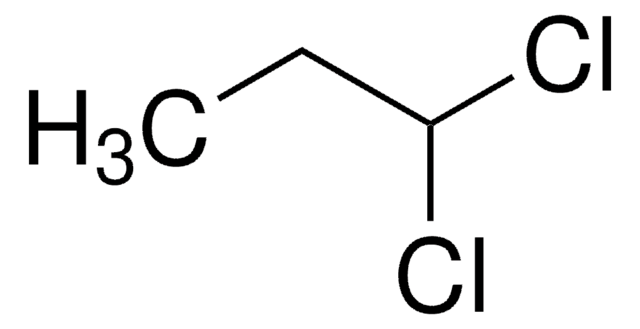40012
1,1-Dichloroethane solution
certified reference material, 5000 μg/mL in methanol
About This Item
Productos recomendados
grado
certified reference material
TraceCERT®
Nivel de calidad
Línea del producto
TraceCERT®
CofA
current certificate can be downloaded
envase
ampule of 1 mL
concentración
5000 μg/mL in methanol
técnicas
HPLC: suitable
gas chromatography (GC): suitable
aplicaciones
environmental
formato
single component solution
temp. de almacenamiento
2-8°C
InChI
1S/C2H4Cl2/c1-2(3)4/h2H,1H3
Clave InChI
SCYULBFZEHDVBN-UHFFFAOYSA-N
¿Está buscando productos similares? Visita Guía de comparación de productos
Aplicación
Otras notas
Información legal
Palabra de señalización
Danger
Frases de peligro
Consejos de prudencia
Clasificaciones de peligro
Acute Tox. 3 Dermal - Acute Tox. 3 Inhalation - Acute Tox. 3 Oral - Flam. Liq. 2 - STOT SE 1
Órganos de actuación
Eyes
Código de clase de almacenamiento
3 - Flammable liquids
Clase de riesgo para el agua (WGK)
WGK 2
Punto de inflamabilidad (°F)
51.8 °F - closed cup
Punto de inflamabilidad (°C)
11 °C - closed cup
Equipo de protección personal
Eyeshields, Faceshields, Gloves
Elija entre una de las versiones más recientes:
¿Ya tiene este producto?
Encuentre la documentación para los productos que ha comprado recientemente en la Biblioteca de documentos.
Protocolos
US EPA Method TO-17: GC Analysis of Volatiles on VOCOL® after Collection/Desorption using Air Toxics Tube
Nuestro equipo de científicos tiene experiencia en todas las áreas de investigación: Ciencias de la vida, Ciencia de los materiales, Síntesis química, Cromatografía, Analítica y muchas otras.
Póngase en contacto con el Servicio técnico








